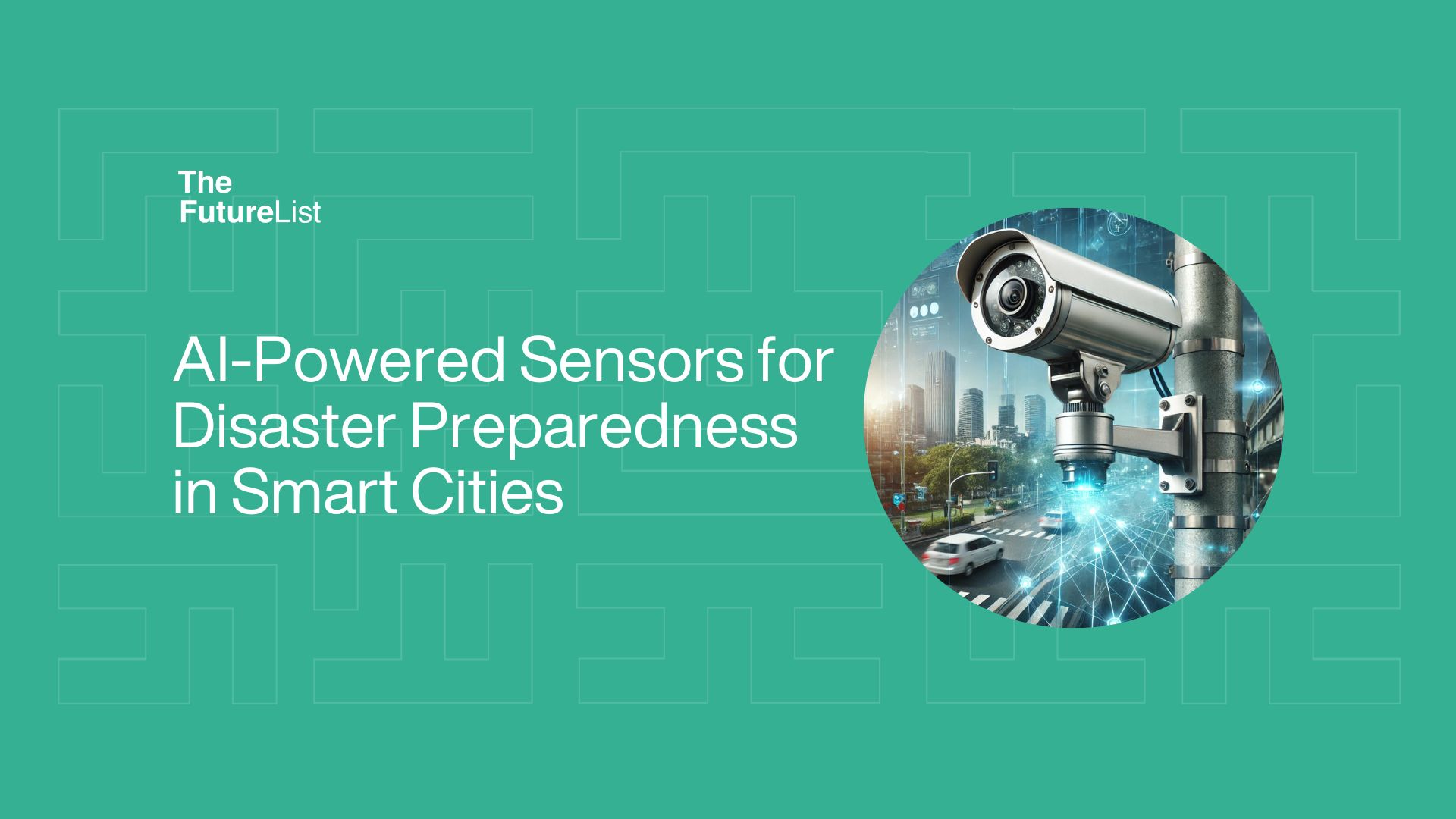
AI-Powered Sensors for Disaster Preparedness in Smart Cities.
In the age of smart cities, sensors driven by artificial intelligence (AI) are transforming disaster preparedness through automated response systems, real-time data, and predictive analytics. The impact of natural and man-made disasters is reduced, emergency response efforts are optimized, and these latest innovations strengthen early warning systems. AI-powered sensors can be incorporated into urban infrastructure to help communities identify threats like floods, wildfires, and earthquakes more quickly and accurately. This proactive approach ensures that communities are better prepared to face calamities by strengthening urban resilience and protecting lives.
Integration of AI Sensors in Urban Infrastructure for Disaster Preparedness
There are various crucial phases involved in integrating AI sensors into urban infrastructure for disaster preparedness. Identifying high-risk regions and choosing the right sensor types, such as seismic, weather, or structural monitoring systems, are the first steps in planning and assessment. These AI-powered sensors are then deployed and installed in key places to provide the best possible coverage and connectivity. Real-time monitoring is therefore made possible by data collection and analysis, where AI systems examine trends to identify possible dangers. Automated notifications and emergency procedures are triggered during the reaction phase, allowing for quick decisions to be made to mitigate disasters. Ultimately, the system is improved by ongoing assessment and optimization, which uses machine learning to gradually increase precision and efficacy. Smart cities are kept proactive and disaster-resistant thanks to this methodical strategy.
Innovative Startups Leveraging AI-Powered Sensors for Disaster Preparedness
Co-founded by Björn Stoffers, OroraTech leverages advanced satellite technology and AI-driven analytics to provide real-time wildfire detection, monitoring, and predictive insights. Using thermal infrared sensors aboard a dedicated satellite constellation in low Earth orbit, the system detects heat signatures regardless of visibility conditions, such as smoke or nighttime darkness. Data from over 30 satellite and ground sources is processed through proprietary algorithms to ensure accurate fire detection, spread prediction, and post-fire impact assessment.
Torch Sensors is a U.S.-based company founded by Vasya Tremsin that utilizes a multi-layered approach to wildfire detection, combining thermal, visible, and chemical analysis to identify fires within minutes. The system provides real-time alerts via text, call, and email, ensuring immediate awareness of potential threats. Compared to traditional detection methods, which can take hours, Torch significantly reduces response times, enhancing fire prevention efforts. Designed for continuous operation, the sensors offer 24/7 monitoring, making them a valuable tool for communities, businesses, first responders, and industries at risk of wildfire damage.
LiXia is an Australian firm founded by Govinda Pandey that integrates sensor technology and IoT to provide real-time flood monitoring and situational awareness. By delivering immediate digital updates, the system enhances early warning capabilities, offering advanced insights into rising water levels. During recent flood events, LiXia sensors detected peak flood levels an hour ahead of traditional monitoring stations, demonstrating their ability to improve response times and evacuation planning.
Get innovation insights from The FutureList weekly. Subscribe to our newsletter here
Categories
- Agritech
- Artificial Intelligence
- Biotech
- Blockchain
- Climate Tech
- Data Infrastructure
- Edtech
- Events
- Fashion
- Fintech
- Healthtech
- Infrastructure
- Innovation Memos
- Innovation Scout Program
- Insight
- Insurtech
- Machine Learning
- Martech
- Mobility
- Music and Media
- Partner Offers
- Perks
- Procurement
- Proptech
- Retailtech
- Ridehailing
- Ridesharing
- Robotics
- Space Aviation
- Supply Chain
- Talent
- Telecoms
- Uncategorized
- Venture Capital
- Wastetech
- Women In Tech
Recent Posts
- How AI Surveillance is Shaping Public Safety in Smart Cities
- Innovation Memo with Zencey: Bringing Equitable Healthcare to Africa
- Inside the Software Model Running Modern Harbours
- The Formula for Future Speed: Data-Driven Performance in Racing
- Leveraging Next-Gen Endoscopic Interventions and Innovations for Healthcare